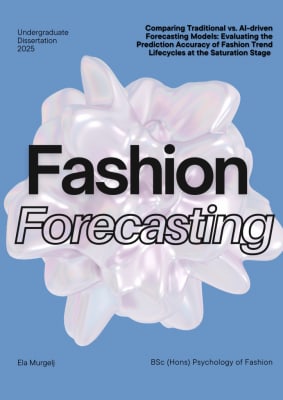
Comparing Traditional vs. AI-driven Forecasting Models: Evaluating the Prediction Accuracy of Fashion Trend Lifecycles at the Saturation Stage
This project investigates how artificial intelligence can enhance fashion trend forecasting by accurately predicting the saturation stage — the point where a trend peaks and begins to decline. Using a Long Short-Term Memory (LSTM) model and comparing it with traditional ARIMA forecasting, the study analyzes two fashion trends (Zara dresses and Chanel bags) using visual trend frequency, Google search interest, and weather data. Results show that AI outperforms traditional methods, with simpler data inputs delivering the highest accuracy. The project offers valuable insights for fashion brands seeking to optimize inventory planning, reduce waste, and anticipate trend behavior more effectively.
Comparing Traditional vs. AI-driven Forecasting Models: Evaluating the Prediction Accuracy of Fashion Trend Lifecycles at the Saturation Stage
To report inappropriate content, an infringement of copyright, or to report a problem on the Portfolio platform, please contact the Digital Team
